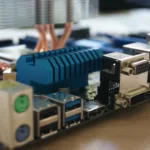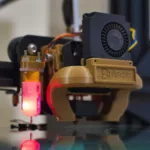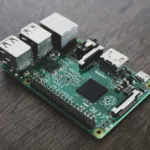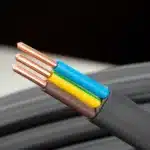
Introduction
The landscape of manufacturing is undergoing a transformative shift fueled by technological advancements, including the integration of Internet of Things (IoT) connectivity. By seamlessly connecting physical devices and machinery to the internet, IoT has revolutionized the way manufacturing processes are monitored, managed, and optimised. Our handy blog post explores the nuances of IoT connectivity in the manufacturing sector, exploring its implications, benefits, challenges, and future prospects.
The Advent of IoT in Manufacturing
The adoption of IoT technology in manufacturing, often called the Industrial Internet of Things (IIoT), signifies a leap towards the fourth industrial revolution, or Industry 4.0. At its core, IIoT is about connecting machines, devices, sensors, and people to collect and analyse data in real-time. This unprecedented level of digital connectivity within the manufacturing environment aims to unlock new levels of performance and optimise operational efficiency.
Rising Need for IoT Integration in Manufacturing
Integrating IoT in manufacturing is essential for staying competitive in today’s fast-paced and increasingly digital world. It enables manufacturers to streamline operations, improve decision-making, and ultimately deliver better products to customers. Furthermore, IoT integration can lead to significant cost savings for manufacturers by optimising processes, reducing downtime, and minimising waste. According to research by McKinsey & Company, predictive maintenance alone can reduce maintenance costs by up to 30% and unplanned downtime by 70%.
Key Components (Infrastructure) of IoT Connectivity in Manufacturing Include:
- Sensors and Devices: IoT sensors are deployed throughout the manufacturing facility to gather data on various parameters such as temperature, pressure, humidity, vibration, and more. These sensors can be integrated into machinery, equipment, and even products themselves, providing a wealth of real-time information.
- Connectivity Infrastructure: A robust connectivity infrastructure is essential to enabling seamless communication between devices. This typically involves the use of wireless technologies such as Wi-Fi, Bluetooth, Zigbee, or cellular networks. Additionally, edge computing solutions may be employed to process data close to its source, reducing latency and bandwidth requirements.
- Data Analytics and Visualisation: The data collected from IoT sensors is meaningless without proper analysis. Advanced analytics tools are employed to process large volumes of data in real time, uncovering patterns, trends, and anomalies. Visualization techniques such as dashboards and reports help translate this data into actionable insights for decision-makers.
Significant Implications and Advantages of IoT Connectivity in Manufacturing Sectors
The integration of IoT connectivity in manufacturing holds immense implications and benefits for enhanced efficiency, productivity, and innovation and include:
Transforming Manufacturing Paradigms
IoT connectivity is transforming manufacturing paradigms by enabling real-time monitoring and control of the factory floor. It allows predictive maintenance, where machine learning algorithms predict equipment failures before they happen, significantly reducing downtime and maintenance costs. Moreover, IoT-driven process optimisation facilitates the fine-tuning of production processes in real time, ensuring optimal efficiency and product quality.
Enhancing Supply Chain Visibility
One critical advantage of IoT connectivity in manufacturing is the enhanced visibility it offers across the supply chain. By equipping containers, shipments, and products with IoT sensors, manufacturers can gain insights into the location, condition, and progress of their goods throughout the supply chain. This real-time data enables manufacturers to make informed decisions, anticipate delays, and promptly address any issues, thereby improving overall supply chain resilience and customer satisfaction.
Driving Sustainable Practices
Sustainability has become a cornerstone of modern manufacturing strategies. IoT connectivity can drive sustainable manufacturing practices by enabling more efficient utilisation of resources and reducing waste. For instance, IoT sensors can monitor energy consumption across various processes and identify areas where energy use can be optimised. Similarly, IoT technology can help in water conservation, waste reduction, and ensuring compliance with environmental regulations, thereby supporting the global push towards sustainability.
Overcoming Implementation Challenges
Despite its numerous benefits, integrating IoT connectivity in manufacturing is not without challenges. Concerns about data security and privacy are vital, as the increasing interconnectedness also opens up new vulnerabilities. Manufacturers must invest in robust cybersecurity measures to protect sensitive data from breaches and cyberattacks.
Additionally, the complexity of integrating IoT technology with existing legacy systems poses another significant challenge. It requires careful planning, a skilled workforce, and sometimes significant capital investment to ensure seamless integration without disrupting ongoing operations.
The Future of Manufacturing with IoT Connectivity
Looking ahead, the future of manufacturing with IoT connectivity is incredibly promising, witnessing even greater levels of automation, efficiency, and innovation. The integration of artificial intelligence with IoT, for instance, is set to further revolutionise manufacturing processes by enabling intelligent decision-making and autonomous operations.
Moreover, the advent of 5G technology is expected to significantly enhance IoT capabilities by providing faster, secure, and more reliable connectivity. This will enable more extensive data collection and analysis, further optimising manufacturing operations and supply chain management.
Final Words
The incorporation of IoT connectivity in manufacturing marks a significant milestone in the industry’s evolution. IoT technology is setting a remarkable stage for a more efficient, resilient, and innovative manufacturing sector. However, as manufacturers navigate this digital transformation, it is crucial to address the accompanying challenges, particularly those related to data security and system integration. With careful planning and strategic investment, the potential of IoT in manufacturing can be fully realised, paving the way for a new era of industrial excellence.





















